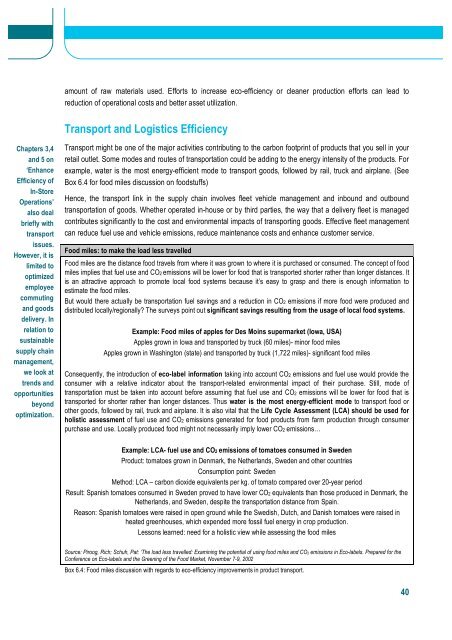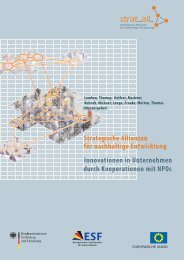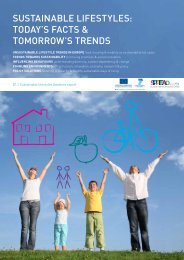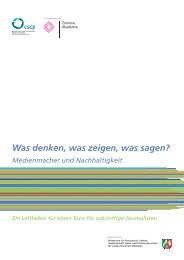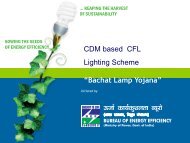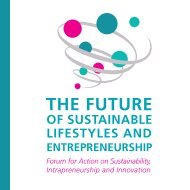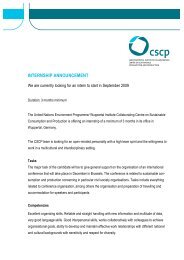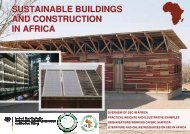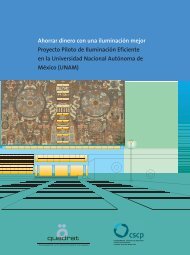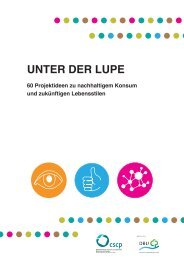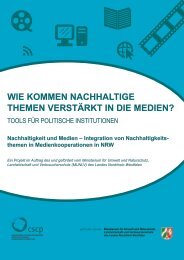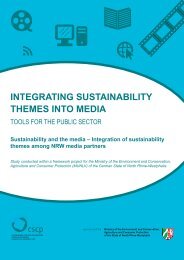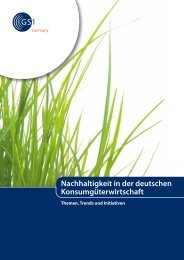Retailers Calendar
Retailers Calendar
Retailers Calendar
Create successful ePaper yourself
Turn your PDF publications into a flip-book with our unique Google optimized e-Paper software.
amount of raw materials used. Efforts to increase eco-efficiency or cleaner production efforts can lead to<br />
reduction of operational costs and better asset utilization.<br />
Transport and Logistics Efficiency<br />
Chapters 3,4<br />
and 5 on<br />
‘Enhance<br />
Efficiency of<br />
In-Store<br />
Operations’<br />
also deal<br />
briefly with<br />
transport<br />
issues.<br />
However, it is<br />
limited to<br />
optimized<br />
employee<br />
commuting<br />
and goods<br />
delivery. In<br />
relation to<br />
sustainable<br />
supply chain<br />
management,<br />
we look at<br />
trends and<br />
opportunities<br />
beyond<br />
optimization.<br />
Transport might be one of the major activities contributing to the carbon footprint of products that you sell in your<br />
retail outlet. Some modes and routes of transportation could be adding to the energy intensity of the products. For<br />
example, water is the most energy-efficient mode to transport goods, followed by rail, truck and airplane. (See<br />
Box 6.4 for food miles discussion on foodstuffs)<br />
Hence, the transport link in the supply chain involves fleet vehicle management and inbound and outbound<br />
transportation of goods. Whether operated in-house or by third parties, the way that a delivery fleet is managed<br />
contributes significantly to the cost and environmental impacts of transporting goods. Effective fleet management<br />
can reduce fuel use and vehicle emissions, reduce maintenance costs and enhance customer service.<br />
Food miles: to make the load less travelled<br />
Food miles are the distance food travels from where it was grown to where it is purchased or consumed. The concept of food<br />
miles implies that fuel use and CO2 emissions will be lower for food that is transported shorter rather than longer distances. It<br />
is an attractive approach to promote local food systems because it’s easy to grasp and there is enough information to<br />
estimate the food miles.<br />
But would there actually be transportation fuel savings and a reduction in CO2 emissions if more food were produced and<br />
distributed locally/regionally? The surveys point out significant savings resulting from the usage of local food systems.<br />
Example: Food miles of apples for Des Moins supermarket (Iowa, USA)<br />
Apples grown in Iowa and transported by truck (60 miles)- minor food miles<br />
Apples grown in Washington (state) and transported by truck (1,722 miles)- significant food miles<br />
Consequently, the introduction of eco-label information taking into account CO2 emissions and fuel use would provide the<br />
consumer with a relative indicator about the transport-related environmental impact of their purchase. Still, mode of<br />
transportation must be taken into account before assuming that fuel use and CO2 emissions will be lower for food that is<br />
transported for shorter rather than longer distances. Thus water is the most energy-efficient mode to transport food or<br />
other goods, followed by rail, truck and airplane. It is also vital that the Life Cycle Assessment (LCA) should be used for<br />
holistic assessment of fuel use and CO2 emissions generated for food products from farm production through consumer<br />
purchase and use. Locally produced food might not necessarily imply lower CO2 emissions…<br />
Example: LCA- fuel use and CO2 emissions of tomatoes consumed in Sweden<br />
Product: tomatoes grown in Denmark, the Netherlands, Sweden and other countries<br />
Consumption point: Sweden<br />
Method: LCA – carbon dioxide equivalents per kg. of tomato compared over 20-year period<br />
Result: Spanish tomatoes consumed in Sweden proved to have lower CO2 equivalents than those produced in Denmark, the<br />
Netherlands, and Sweden, despite the transportation distance from Spain.<br />
Reason: Spanish tomatoes were raised in open ground while the Swedish, Dutch, and Danish tomatoes were raised in<br />
heated greenhouses, which expended more fossil fuel energy in crop production.<br />
Lessons learned: need for a holistic view while assessing the food miles<br />
Source: Piroog, Rich; Schuh, Pat: ‘The load less travelled: Examining the potential of using food miles and CO2 emissions in Eco-labels. Prepared for the<br />
Conference on Eco-labels and the Greening of the Food Market, November 7-9, 2002<br />
Box 6.4: Food miles discussion with regards to eco-efficiency improvements in product transport.<br />
40


